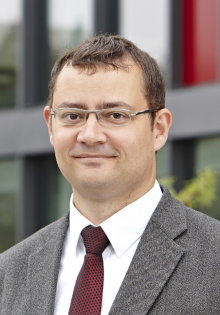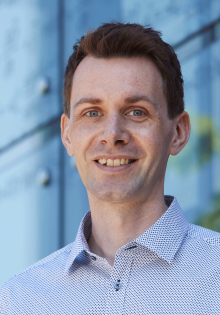Natural and artificial crystals can change the spectral colour of light – known as the nonlinear optical effect. Colour conversion is used for numerous applications, including nonlinear microscopy for biological structures and material examinations, LED light sources and lasers, in optical communications, and in photonics and its resulting technologies such as quantum computing. Researchers from Paderborn University have now found a way to improve the physical process underlying the phenomenon. The results have been published in the specialist journal ‘Light: Science & Applications’.
‘The process is based on the anharmonic potential of crystal atoms and often prompts a precise multiplication of the light frequency, known as generating “higher harmonics” – similar to the overtones heard when the string on a musical instrument vibrates’, Paderborn physicist Professor Cedrik Meier explains. Although the effect occurs naturally in many crystals, it is often extremely weak. Given this, there have been various approaches to increasing the effect, for example by combining different materials and their structures on a micro and nano scale. Paderborn University has conducted intensive, successful research in this area in recent decades.
One focal point of this research into photonics is metamaterials, and in particular metasurfaces. This involves structured elements being applied in the nanometre range to a thin substrate, which then interacts with incoming light and for example produces optical resonances. With a longer duration and greater focus, the light can generate higher harmonics more efficiently.
An interdisciplinary collaboration sees the research groups run by Professor Cedrik Meier (Nanophotonics & Nanomaterials), Professor Thomas Zentgraf (Ultrafast Nanophotonics) and Professor Jens Förstner (Theoretical Electrical Engineering) at Paderborn University working together as part of the ‘Tailored Nonlinear Photonics’ Collaborative Research Center/Transregio 142 to develop an innovative approach to generating higher harmonics more efficiently. By using specifically proportioned applications of microscopically small elliptical cylinders made of silicon, they can take advantage of the ‘Fano’ effect – a particular physical mechanism where multiple resonances intensify each other.
The researchers initially used digital simulation to determine the ideal geometric parameters and investigated the underlying physics. They then created nanostructures using state-of-the-art lithography processes, and conducted optical examinations. They were able to prove through both theory and experimentation that this enables third harmonics – i.e. light with triple the frequency of the incoming light – to be generated much more efficiently than with previous known structures.
The researchers’ findings were presented in a specialist article entitled ‘A multi-mode super-fano mechanism for enhanced third harmonic generation in silicon metasurfaces’ in the renowned journal published by Springer Nature.
In addition, the success can be read in the industry magazine Laser Focus World: : https://www.laserfocusworld.com/optics/article/14294634/tailored-nonlinear-metasurfaces-generate-higher-harmonics-more-efficiently and followed again in the magazine's video news: https://www.youtube.com/watch?v=tZ0Z_v5iE20&t=156s&ab_channel=LaserFocusWorld




